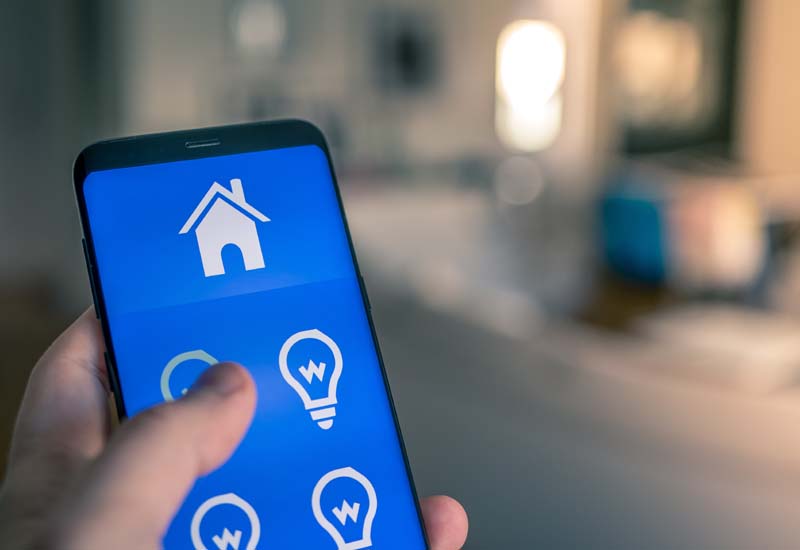
The team at NET LED Lighting take a look at why ‘smart’ lighting has become even more intelligent through the use of universal controls.
The benefits of energy saving and lower maintenance from using LED lighting are well recognised. However, being electronic components, LEDs bring another major benefit to lighting – ease and flexibility of electronic control, sometimes referred to as ‘smart’ control or ‘smart’ lighting.
Improved control over our lighting allows additional energy savings as well as the convenience and comfort provided to the user; the correct amount of light can be delivered where you want it, when you want it.
Different guises
Smart control comes in the form of sensors, sometimes linked to controllable drivers, which can be incorporated inside the luminaire or mounted separately, according to the application, and which then control the lighting. The two most popular types of sensors are for motion and daylight.
Motion or occupancy sensors detect when a space is being used then automatically turn lights on or off accordingly. Daylight harvesting uses photo sensors to detect levels of natural light and automatically dims or brightens the LED lights as required, thereby providing consistent lighting levels as well as reducing energy usage.
In addition to response to presence and ambient light, control systems will allow automation of the light levels at set times or under set conditions and users can have control over their own lighting to provide optimal working conditions. Scheduling allows lights to be turned on/off and dimmed at specified times. Companies can use these controls for ‘demand response’ allowing them to reduce energy consumed by lighting to pre-set levels at times of peak usage or when energy prices are high.
Who can benefit?
Most commercial and industrial premises can benefit from smart LED lighting. The electricity spent on conventional high wattage discharge lamps found in warehouses and workshops can be expensive. These are usually turned on at the start of the day and left on until the last person leaves at night.
Conversion to high output LED high or low bay lighting can reduce lighting costs by over 50% and many would be happy with that but, with the addition of a motion sensor and/or daylight harvesting, even further savings are possible.
Now, when the first member of staff arrives in the morning the lights switch on automatically with no warm-up time. As people move through the building the lighting responds and stays on for as long as the sensors detect presence. When there is nobody present, light output can be automatically reduced to, say 10%, for a set period and then switched off completely, until reactivated. The energy savings of LED lighting with sensor control could therefore reduce the running cost by up to 85%!
Retrofit possibilities
Traditionally, most lighting control systems were built in as part of the luminaire, or as part of a more sophisticated centrally controlled system using International Standards such as the Digital Addressable Lighting Interface (DALI) used to control conventional ballasts, LED lighting and emergency lighting systems.
However, more recently, with the introduction of universal lighting controls from manufacturers such as Merrytek, distributed in the UK by NET LED Lighting, automatic motion sensors and daylight harvesting can be added to most existing and new LED luminaires. A range of universal models are available according to the application. For example, a simple sensor for both motion and daylight is ideal for installation into bulkheads and non-corrosive fittings (NCFs).
An IP65 rated motion and daylight sensor has been specifically designed for warehouse environments, which can be mounted remotely or attached to LED high or low bays. In addition, if the high or low bays incorporate 1-10V dimming, a standby light level can be set.
A more sophisticated Merrytek universal lighting control, switched by motion and daylight, has dual output allowing control of any load up to 200W with different hold times, making it ideal for bathrooms controlling both the lighting and extractor fans. Where dimming is required, the Merrytek dimming drivers (also distributed by NET LED Lighting) which allow push, DALI, or 1-10V dimming inputs, can be used in conjunction with sensors.
These universal lighting controls are a smart, versatile and cost-effective way of making an existing LED lighting installation into controllable smart lighting, or a means of adding smart control to a new LED lighting installation.
Integrated control
An alternative smart lighting solution is offered by LG Electronics (exclusively distributed through electrical wholesalers in the UK by NET LED Lighting). LG offers fully integrated wireless control, eliminating the need for dedicated control wiring and thereby significantly reducing installation costs and removing many complexity concerns.
LG has adopted the open wireless protocol, ZigBee, allowing it to work seamlessly, not only with devices which use the same protocol, but also to integrate with the control systems of other solution providers which are designed to work with ZigBee. The LG LED lighting driver has a compact communication dongle which simply plugs into the driver, thereby making it wirelessly controllable.








